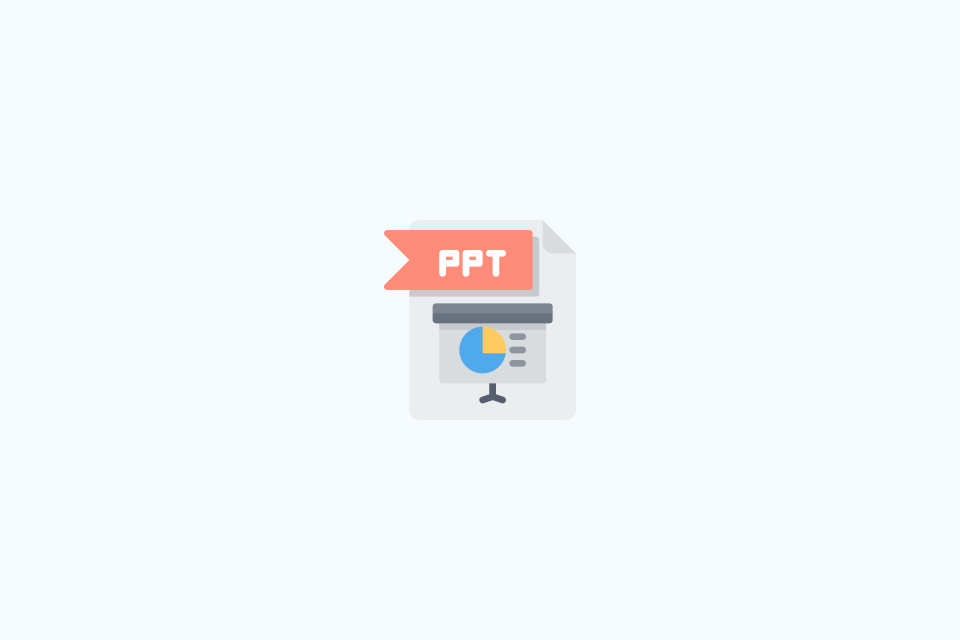How to Translate PowerPoint While Preserving Design

TABLE OF CONTENTS
Introduction
In our globalized world, presentations often need to be delivered in multiple languages. Simply copying and pasting text or running a file through a generic machine translator is tedious and often ruins the formatting. This article explains why layouts break during translation and how to preserve design aesthetics when translating a PowerPoint (PPT) file. It also surveys popular tools that can help and offers practical tips to ensure a polished result.
Quick Decision Guide
| Your Situation | Recommended Tool | Time Required | Typical Cost |
|---|---|---|---|
| Quick personal reference | Google Translate | 5 minutes | Free |
| Internal team use | PowerPoint built-in | 30 minutes | Free |
| Client presentation | AI platforms | 1-2 hours | $20-200/month |
| High-stakes business | Professional translator | 2-5 days | $50-150/slide |
Why Do Layouts Break During Translation?
PowerPoint slides are a mix of text boxes, charts, shapes and images. When text is translated into another language, the number of words and the length of each word can change dramatically.
Text Expansion Rates by Language
Different languages require different amounts of space:
- English → German: +30-35% longer
- English → Spanish: +15-25% longer
- English → Chinese: -20-30% shorter
- English → Arabic/Hebrew: Requires right-to-left (RTL) layout restructuring
Microsoft’s Note: The Copilot translation feature creates a new copy of the presentation and translates the text, but it doesn’t adjust slide layout or font size; if the translated text is longer, users must resize text boxes manually.
Professional translators warn that if your original design has no breathing room, translated text will overflow.
Common Translation Methods and Their Impacts on Layout
1. Built-in Translator in PowerPoint
Access: Review → Translate
PowerPoint’s built-in function lets you translate selected text within a slide. This method is suited for personal use but is slow because it translates one text fragment at a time, and you’ll likely need to reapply formatting afterward.
Pros:
- Built-in and free
- No need for external software
- Works offline
Cons:
- Only translates selected text boxes; no “translate entire file” option
- Can remove bolding, superscripts and other formatting
- Requires manual layout fixes after translation
Best For: Quick translations of 1-3 slides for personal understanding
2. Online Machine Translation (e.g., Google Translate)
Uploading a PPT to Google Translate or similar services can quickly produce translated text, but it will strip out images and formatting.
Pros:
- Free and very fast
- Good for understanding content
Cons:
- Strips all images, charts, and formatting
- Can’t download a translated PPT file
- Must rebuild presentation from scratch
Best For: Reading a presentation in another language for personal understanding, not for delivering a polished presentation
Warning from Redokun: “The images, font styles and layout won’t be preserved, and you can’t download a translated PPT file.”
3. Specialized AI Translation Platforms
Several modern platforms combine artificial intelligence with layout preservation to translate entire presentations efficiently:
| Platform | Key Features | Best For |
|---|---|---|
| Pairaphrase | ChatGPT-powered AI translation with file upload; preserves formatting; glossary support for brand terminology | Marketing materials, brand-sensitive content |
| Redokun | Extracts text into organized segments; translation management system; preserves styles, images and layout | Large presentations, ongoing translation projects |
| Smallpdf Translate | Upload entire PPT, translate online; keeps layout, fonts and styling | Quick turnaround on standard business presentations |
| OpenL Doc Translator | AI-powered document translation; supports multiple formats (PPTX, PDF, DOCX, XLSX); focuses on preserving original layout | Multi-format document translation needs |
| Smartcat / SlideSpeak | AI-powered with support for many languages; maintains slide design; glossaries for consistent terminology; collaboration features | Organizations with recurring translation needs |
Common Advantages:
- Automated layout preservation with intelligent text box resizing
- Time-saving: translate entire decks in minutes
- Glossary and terminology management for brand consistency
- Collaboration features for team review and approval workflows
Common Limitations:
- Subscription costs typically $20-200/month depending on volume
- Still requires manual review and adjustment
- File size limits may apply (typically 20-30 MB)
Best For: Regular translation needs, client-facing presentations where design quality matters but budget doesn’t allow for full human translation
4. Manual Translation
For high-stakes presentations where design consistency is critical, human translation plus manual layout adjustment is often the best approach.
Pros:
- Cultural localization beyond word-for-word translation
- Context-aware, understands industry jargon and brand voice
- Professional design adjustment included
- Highest quality assurance
Cons:
- Expensive ($50-150 per slide depending on language pair)
- Time-intensive (2-5 days for typical 30-slide deck)
- Requires clear communication of requirements
Best For: Executive presentations, investor pitches, product launches, legal presentations, or any high-stakes scenario where quality cannot be compromised
Tool Comparison at a Glance
| Feature | PowerPoint Built-in | Google Translate | AI Platforms | Human Translation |
|---|---|---|---|---|
| Cost | Free | Free | $20-200/month | $50-150/slide |
| Speed | 30 min | 5 min | 1-2 hours | 2-5 days |
| Format Preservation | Poor | None | Good | Excellent |
| Translation Quality | Fair | Fair | Good | Excellent |
| Cultural Adaptation | No | No | Limited | Yes |
| Entire File Translation | No | No | Yes | Yes |
Tips for Maintaining Slide Layout
Whether you use a tool or translate manually, these best practices will help preserve your slide design:
Before Translation
1. Leave extra space in your original design
- Plan for text expansion by leaving 30-40% extra whitespace
- Avoid filling text boxes to capacity
- Use bullet points instead of long paragraphs
Tip from Interpro: “Leaving more space around text prevents slides from looking crowded and reduces the need for additional slides.”
2. Standardize fonts and styles
- Use consistent fonts and sizes across slides (system fonts work best)
- Apply master slide templates rather than individual formatting
- Stick to Arial, Calibri, or Times New Roman for universal compatibility
3. Prepare translation assets
- Create a glossary of brand terms, product names, and technical vocabulary
- Document tone, formality level, and special instructions
- Provide context notes for acronyms and cultural references
4. Simplify content
- Remove unnecessary text or consolidate ideas
- Replace text with icons or visuals where appropriate
- Consider whether every slide is essential
During Translation
5. Use glossaries and translation memories
- Upload glossaries so brand-specific terms remain consistent
- Lock brand names and special terms that shouldn’t be translated
- Build translation memory for recurring projects
6. Adjust for right-to-left languages
- When translating into Arabic or Hebrew, text direction reverses
- Bullet points and charts need repositioning
- Navigation elements should be flipped
After Translation
7. Review and tweak after translating Even advanced AI tools can’t perfectly adjust every slide. Always:
- Go through the translated file slide by slide
- Resize text boxes to fit translated content
- Adjust line breaks at natural phrase boundaries
- Reposition images or charts where necessary
- Verify all hyperlinks and animations work
8. Localize content
- Adapt cultural references, images, and examples
- Adjust idioms and metaphors for target audience
- Review color schemes for cultural appropriateness
- Update date/number formats and currency symbols
Recommended Workflow
Step 1: Assess Your Needs
Determine whether your presentation is for:
- Internal reference or personal use → Consider free methods
- Professional client presentation → Consider AI platforms
- Formal business meeting or high-stakes pitch → Consider professional translation
Step 2: Select a Tool or Approach
- Quick personal reference: Built-in translation or Google Translate
- Formal presentations: Specialized platforms like Pairaphrase, Redokun, Smallpdf, OpenL Doc Translator, or Smartcat
- Critical business content: Professional human translator
Step 3: Backup and Prepare the File
- Save a copy of your original PPT with clear naming
- Trim unnecessary text or consolidate ideas to mitigate text expansion
- Create glossary of key terms that must remain consistent
Step 4: Translate
- Upload the presentation to your chosen platform
- Select source and target languages
- Configure settings and upload glossaries
- Start the translation process
Step 5: Refine Layout
Once translated, review every slide:
- Resize text boxes and adjust font sizes
- Reposition graphics to match the original aesthetic
- Check alignment and spacing
- Verify color contrast meets accessibility standards
Step 6: Localize Content
- Adapt cultural references and examples to suit the target audience
- Replace culture-specific images or color palettes
- Review with native speaker for naturalness
- Test on actual presentation equipment
Common Mistakes to Avoid
❌ Not planning for text expansion → Always design with 30-40% extra whitespace
❌ Translating text embedded in images → Text in graphics can’t be translated by tools; use separate text boxes
❌ Skipping proofreading → Machine translation errors look unprofessional; always get native speaker review
❌ Ignoring RTL language requirements → Arabic and Hebrew need complete layout redesign, not just translation
❌ Using custom fonts → Stick to system fonts that are available universally to avoid rendering issues
❌ Translating at the last minute → Budget at least 20% of total preparation time for translation and review
Real-World Examples
❌ Failure Case
A company used Google Translate to translate an investor presentation. All charts, images, and formatting were stripped out. Rebuilding the presentation from scratch took 8 hours and still looked inconsistent.
✅ Success Case
A marketing team used an AI platform to translate a 50-page product catalog. Format retention was 95%, requiring only 30 minutes of minor adjustments. Glossary ensured brand terms remained consistent across all pages.
Key Takeaways
- Anticipate text expansion: Different languages require different amounts of space (German +30%, Chinese -20%)
- Choose the right tool: Match your method to your needs, budget, and timeline
- Preserve formatting: Use specialized tools or human expertise for important presentations
- Localize, don’t just translate: Adapt content for cultural context and audience expectations
- Always review: Test thoroughly on actual presentation equipment before delivery
Conclusion
Translating a PowerPoint presentation is more than changing words from one language to another—it’s about maintaining design integrity and ensuring cultural relevance. By anticipating text expansion, using AI-powered translation tools that preserve formatting, or employing human translation when necessary, you can produce polished multilingual presentations.
With careful preparation and post-translation review, you can deliver a seamless presentation experience to any audience. Remember: good translation preserves your message, great translation preserves your design, and excellent translation adapts both for your audience’s culture.
Pro Tip: Start with a well-designed template that has built-in flexibility for text expansion. This single decision can save hours of layout adjustment later.


